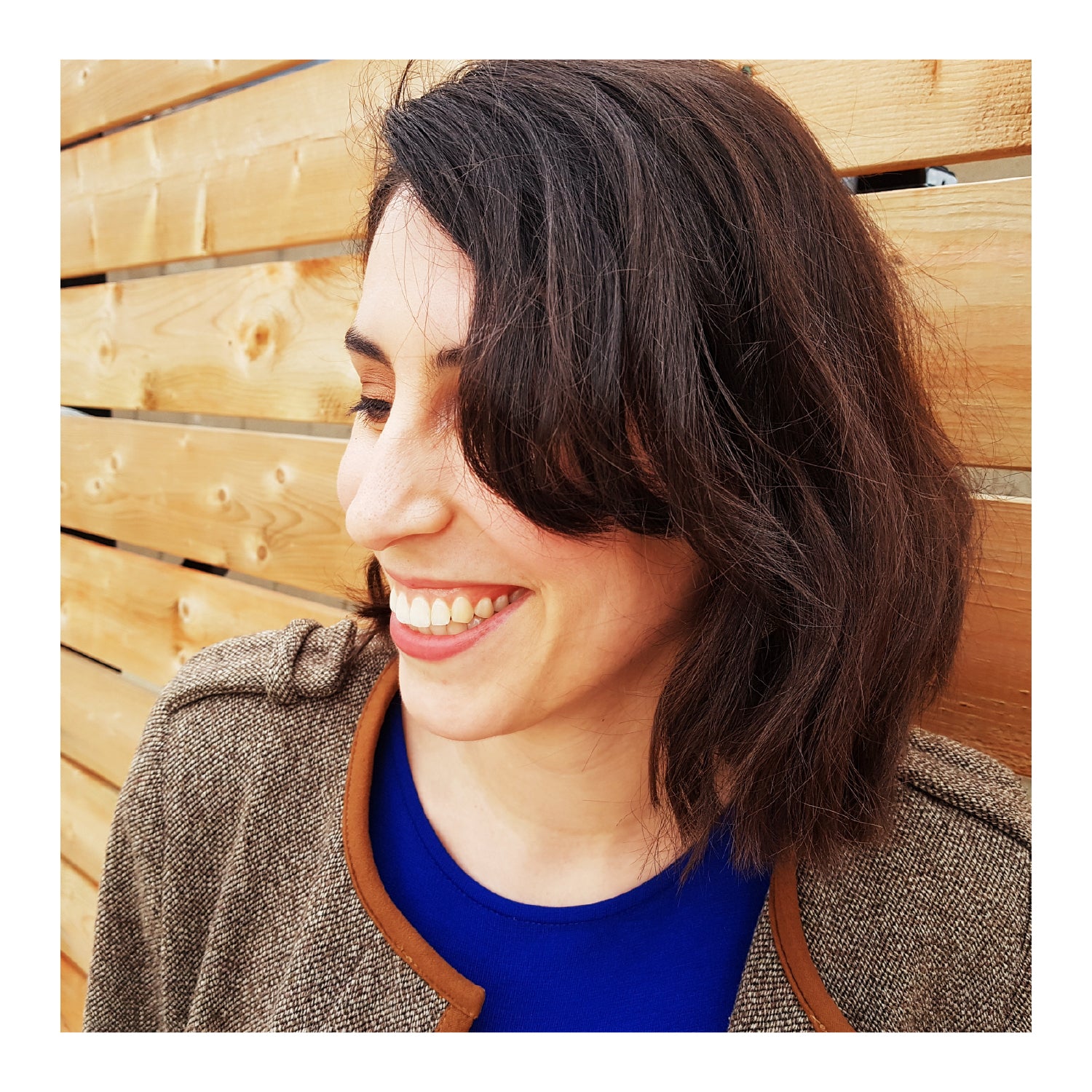Before we dig into the differences between these two techniques, let's look at the similarities.
Both English Paper Piecing (EPP) and Foundation Paper Piecing (FPP) fall into the larger category of quilting techniques that use a stabilizer during the construction of the quilt top. In other words, both EPP and FPP use paper - acting as the stabilizer - to support the fabric as it’s sewn. The paper is removed after the quilt top is pieced.
There are other related techniques, sometimes called foundation piecing, that use muslin or other materials as stabilizers, but we won't be covering those in this blog.
Overview of English Paper Piecing (EPP)
EPP is a paper piecing technique that uses geometric pieces of fabric to create a quilt with a tile-like pattern.
Hexagon-shaped templates are often used in English Paper Piecing, but triangles, diamonds, clamshells, and other shapes are common as well.
These angular shapes require cutting fabric on the bias (diagonal across the weave) and precisely hand piecing them together. The paper templates stabilize the fabric and give the quilter something substantial to hold on to as they sew. The fabric would be difficult to shape and too flimsy to sew with otherwise.
Once the quilt top is assembled the paper templates are removed and often reused.
Overview of Foundation Paper Piecing (FPP)
Foundation Paper Piecing (FPP) is another paper piecing technique that uses templates to stabilize fabric as the quilt top comes together. It’s primarily used to address small pieces or irregular shapes in a quilt design or to improve sewing accuracy. And, for pattern designers like me, FPP allows us to make pretty much any design into a quilt pattern.
There are various approaches to FPP but, most popularly, you complete a template by sewing fabric together directly through the paper template (or pattern piece). Like EPP the paper stabilizes small fabric pieces or pieces that have been cut on the bias.
Once the quilt top is assembled the paper is also removed.
Differences between EPP and FPP
FPP & EPP Patterns
EPP patterns are generally made of repeating geometric shapes (from diamonds to clamshells) that often look like tile work. You'll also find shapes in a variety of sizes - even dime-sized hexagons! But it’s important to keep in mind that very large or very small shapes will be more difficult to piece. The fabric colours you choose for a particular project will dramatically change the final design of the quilt top. For example, the two patterns below both use hexagon-shaped templates, but the placement of the colours tell very different design stories.


FPP patterns offer a bit more design flexibility, and can be used to make very simple or very complex designs. There are no limitations when it comes to the shape or size of the templates. The technique - from a design perspective - can successfully depict almost any image, though curves are not very commonly used. Pattern designers will often choose to use the FPP method to construct their pattern when they have small pieces, oddly-shaped angles, or to make matching points on a pattern easier.

Above: Elephant Abstractions. FPP pattern available at violetcraft.com.
Paper Templates (also known as Pattern Pieces)
EPP uses heavyweight paper, like card stock, for templates. The cardstock will hold its shape better when handled during assembly, and will be reused once a section of the quilt top is complete. Quilters can draw and cut their own templates, purchase pre-cut templates, or purchase a pattern + template combo for a quick start. Templates may be identified with a letter or number to indicate where they are located in a more complex EPP pattern, or they may be blank as the layout is self explanatory or at your discretion.
Above: A tutorial on preparing and sewing hexagons by Pretty by Hand.
FPP uses standard copy paper, newsprint, vellum, or freezer paper for templates. The designs can be printed or drawn. Stability is less important for FPP because: 1) the templates are machine-pieced and handled less, and 2) the template is trimmed into its final shape once pieced.
Another important distinction is that it’s common to sew directly through the paper template to secure the fabric when foundation paper piecing. The thinner the paper, the easier it is to remove once the quilt top is complete. Each FPP template will have various notations to instruct the quilter on how to complete it, including its location in the pattern, fabric to use, sewing order, and seam allowance.

Above: Close up of Nesting Phoenix templates.
Preparing for Sewing
Once your EPP templates have been bought or printed and cut, then fabric can be applied. Quilters cut a piece of fabric that measures the size of the template plus a quarter-inch seam allowance. EPP offers a unique opportunity to “fussy cut” fabric as well. To fussy-cut fabric, quilters may use a transparent acrylic template or draft one of their own, to audition areas of a large piece of fabric and determine whether to highlight a specific area. For example, quilters may want to feature a particular motif in the centre of a hexagon, rather than leave it to chance. There are other techniques for auditioning fabrics, including mirroring to preview more complex designs.

Example of how to use a Magic Mirror in EPP by Flossie Teacakes. Check out her blog on how to fussy cut here.
Once the fabric piece is selected and cut, it’s centered on the template and the seam allowances are basted to the back of the template using glue or thread.
Foundation paper piecing requires less preparation and no fabric basting is required. Once the templates are printed, they are cut out with ⅛” of access paper around the outer edge of each template. Quilters may choose to colour code the sections of their templates to reduce making errors during sewing.
FPP patterns that are constructed by repeating a couple of templates may include cutting instructions. More complex patterns do not include cutting instructions and assume that the quilter is comfortable cutting fabric as-they-go.

Learn how to successfully cut as-you-go by visiting my blog post.
Sewing & Assembly
English paper piecing projects are typically hand-sewn with needle and thread. Basted templates are placed right sides together and sewn together without puncturing the template. The quilt top grows with each shape added.
EPP work is typically done on-the-go (meaning not at your sewing machine), which makes it a great option for social quilting. EPP is considered “slow sewing” as it will likely be completed after many sittings.

Foundation paper piecing is completed at a sewing machine. It’s helpful to set-up a workspace that facilitates fabric cutting, pressing, and sewing easily, because you’re moving through all the steps repeatedly to complete your templates.
Unlike EPP, foundation paper piecing often requires that more than one fabric piece is sewn to a template. In other words, a single template can have multiple sections. Quilters must complete all the sections on each template before assembling them together to build their quilt top.

Learn how to foundation paper piece step-by-step.
A Few More Differences between EPP and FPP
Waste
EPP has very little paper waste because the templates are reusable. However, fussy cutting can produce some large fabric scraps when compared to traditional piecing. There are cutting tools that can be used to help reduce these scraps like plastic stencils or an Accuquilt cutting machine.
FPP produces more paper and fabric waste than EPP, primarily due to the fact that the paper is single-use. (Note, the freezer paper method allows you to reuse the template a few more times). Like EPP however, the more thoughtful a quilter is about how they cut their fabrics, the less waste the technique will produce. More experienced quilters can make good use of oddly-shaped scraps as well.
Scrap Busting
An English Paper Pieced quilt can be a fantastic scrap buster! The options are endless as s long as your scraps are large enough to use with your templates (including the seam allowance).
Foundation paper piecing also offers the opportunity to use scraps, especially if the pattern’s templates feature very small sections. Trimming FPP templates as they are completed may produce scraps that can be used to complete subsequent template sections. Learn how to make the most of your scraps here.
Difficulty
English Paper piecing is relatively low difficulty because it's a very manual process. Keep in mind that you will likely have Y-seams in your EPP pattern - but don’t fret - they are easier to handle when hand-sewing.
The difficulty of a foundation paper pieced project can differ depending on the design. There are beginner-friendly FPP patterns with repeating templates that allow quilters to become comfortable with the technique, and there are very detailed patterns with many templates and matching seams. While the complexity of the pattern may vary, the technique is always the same and the more you practice, the more comfortable you’ll become. As a passionate foundation paper piecer - I assure you that it seems more difficult than it really is. In fact, it makes a difficult-looking pattern easy to assemble!
Time Commitment
English Paper Piecing is a very time consuming technique. Generally, you must pre-cut templates and fabric, and baste fabric to the template before beginning to assemble by hand.
Foundation Paper Piecing typically takes less time than an EPP project. The templates are typically larger and the sewing is done by machine.
My Preferences
I love FPP because it gives me the ability to bring my unique designs to life (they would be VERY difficult and tedious to do using other techniques!). I’m also a bit of a perfectionist and FPP helps me get my points crisp and my seams to match with little effort.
But there is a time and place for everything, and sometimes slow sewing - like EPP - is the perfect remedy to a long day in the sewing studio. Plus, it’s a perfect on-the-go project.
If both of these techniques are new to you, I encourage you to give them a try. You can find my FPP patterns here, and browse any of the EPP patterns featured in this blog.

FPP quilt pattern by Ships & Violins
Do you lean toward EPP or FPP? Let us know in the comment section below.



2 comments
Hi Cynthia,
Your question sent me off for a bit of a search. The shredding you’re experiencing could be from a couple of sources. Check your tension, the type of needle and spool position – can your thread pull off the top or does it come off sideways (perpendicular to the spindle of the spool? Aurifil apparently prefers to come off from the top.
You might find https://auribuzz.com/2020/05/08/thread-troubleshooting/ useful.
By now, you may well have conquered your project and thread issues so I hope it has all come together well for you!
I am new to both techniques. I’ve been taking courses with QuiltFolk and current quilt pattern uses FPP. I have the Add-A-Quarter ruler and printed the paper which feels like newsprint paper. My big issues is with the Aurifil 50 wt thread shredding and breaking. I have changed the needle (there are 6 panels, 4 completed) 4 times now, cleaned and oiled the machine 4 times and still thread breaks. I use 1.5 stitch length. How can I get thru this project, 2 more strips to go? Thank you!